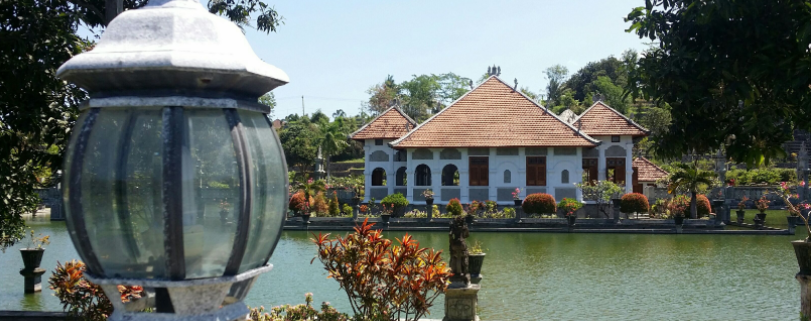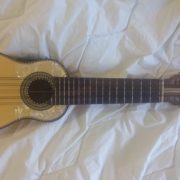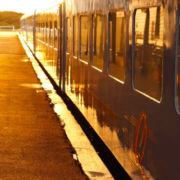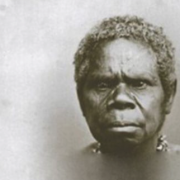A Bali volcano, a witch queen and a palace mystery
TRAVEL: DOUBT if living in the shadow of a Bali volcano is everyone’s cup of tea. Especially one that’s properly blown its stack in ready living memory and poised to do so again any minute now.
When you’re a peasant farmer living a subsistence existence in eastern Bali your residential options aren’t many, though. Even so, the grey Gunung Agung, set to erupt again, 50 years after its last eruption — about 15 seconds ago in geological terms — is revered rather than feared.
The gentle Hindus living in the shadow of Agung believe it was formed from a fragment of the cataclysmic splitting of Mount Meru — the cosmological spiritual axis of the universe — by the god Pasupati. At 3140 metres in height, 10,000 feet or so, that’s a fair fragment.
Geologically, Agung is impressively known as a stratovolcano. Standing at its base, driving about in its penumbra, basking in the sun in the rice fields around it — however you interface with it — its omnipresence is undeniable.
Visitors arrive by bus, motorbike and chartered taxis to witness its towering attitude, many of them happily scoffing banana fritters for breakfast before launching into a bike ride back to Bali’s cultural heartland, Ubud.
Pea-green rice paddies, terraces and palms, villages and villagers, it’s all very picturesque. The bonus is bugger-all puffing because it’s all downhill, for the main part anyway. And at the bottom, there’s invariably a Bintang or two awaiting the desiccated pedaller.
And really, who’s normally going to worry about a volcano in Bali? Ummm, yeah. Of course, the recently smoking Mount Rinjani on neighbouring Lombok was of concern, too, and with good reason. But it’s funny how it, and other ash and pumice-belchers in Indonesia, don’t generally stop the tourists or locals going about their business. Go figure.
First time I encountered Agung was 20 years ago, climbing a multitude of steps in the blazing heat at its Besakih foothill temple. Its impressive nature drew me back recently, as did the surrounding countryside with its glistening terraces, sighing palms, snake-fruit orchids, forests and humble villages. I’d forgotten the rocky, tortuous roads, which have improved markedly but with a commensurate increase in traffic.
I headed south and east in Agung’s shadow, searching for a royal water palace I’d once visited in Amlapur. My old photos showed exquisite stone sculptures, a multi-tiered fountain, terraced gardens, stone bridges — a gorgeous collision of colour, art and water fed by natural springs.
When my taxi ushered me to the site, however, I was bewildered. Nothing seemed the same. Not a skerrick. The buildings were unrecognisable, the entire shape of the water palace totally unfamiliar.
But the hydro-folly, which dates to 1919, was remarkable nonetheless. It boasts exquisite floating pavilions and carved stone walkways, palms and lotus ponds, flowers, grassy terraces, arches, statues, royal furnishings and photographs of its builder, the King of Karangasem, with all his 24 kids. Prolific bloke, that one.
It was built around a pool, the Kolam Dirah, once part of a punishment site for black magic practitioners and named for a legendary witch queen who fought it out with the king of what’s now East Java back in the 14th century. These days, the only detainees in the water palace appear to be dozen inquisitive and out-of-place deer kept coralled in pits. It’s considerably more salubrious than in the past.
Like the surrounding countryside, it was battered by the 1963 Agung eruption along with an earthquake in 1979, which all but destroyed the place. World Bank funding has helped restore the palace to its original glory and a steady succession of taxis and tourists keep the turnstiles clicking. Visitors can stay on site in villas if they so wish. With Agung to the north and the sea and Lombok’s Rinjani to the south, its outlook is spectacular.
I couldn’t for the life of me figure how I’d got it so wrong, though. This was not the water palace I visited at Amlapura before and, with precious little Balinese in my kitbag, no-one I met could understand my confusion or offer an explanation. Back in my hotel, at neighbouring Candidasa, I consulted a couple of dog-eared guidebooks and Dr Google before finally getting to the bottom of my mystery.
Turns out I Gusti Bagus Djelantik, the King of Karangasem, built not one but two water palaces. I was at the Taman Ujung water palace. The one I was missing was Tirta Gangga. Both of them are in Amlapura and only a few kilometres apart. My driver had simply gone to the palace he thought I wanted.
So go figure. Two of the things. I suppose it’s a kind of royal equivalent to stumping up a couple of cars for your teenage kids. When you’ve got two dozen fractious rug-rats, why wouldn’t you build two swimming pools? You can’t throw them in a volcano if they’re acting up, can you?
Then again, when you’re a king …











